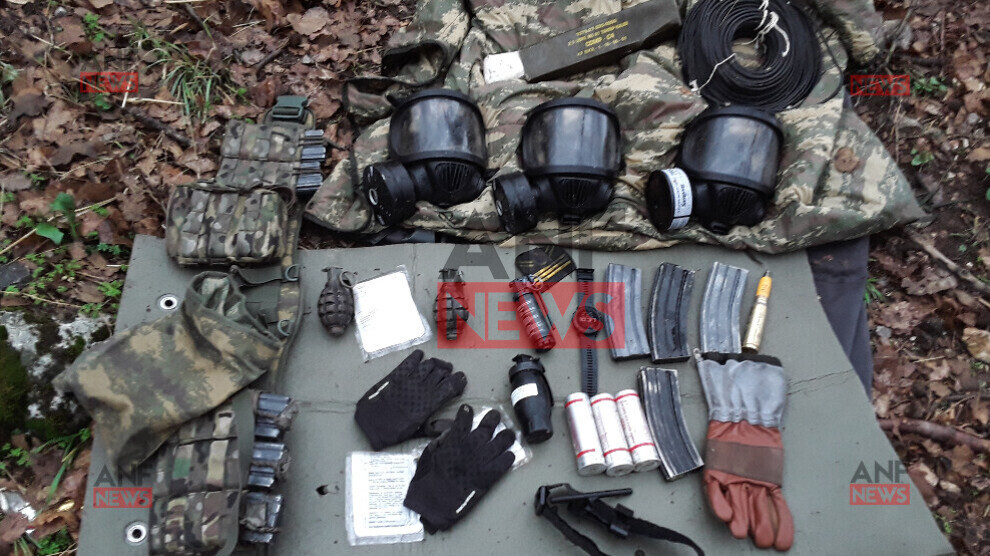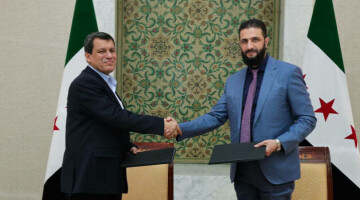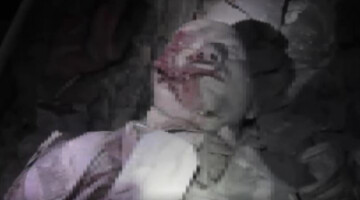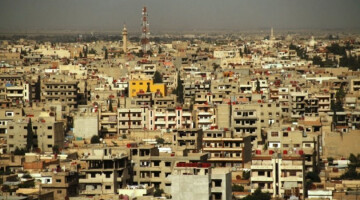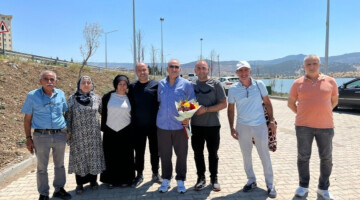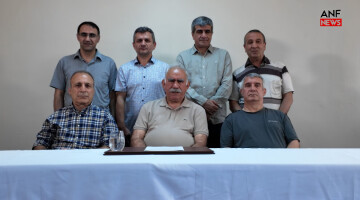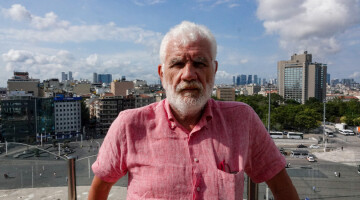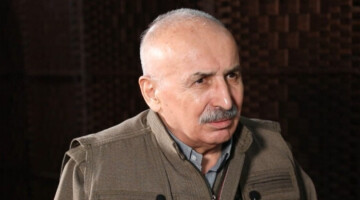The Turkish army launched an invasion operation in the Gare area of southern Kurdistan (Northern Iraq) on February 10 and had to withdraw in the face of guerrilla resistance on February 14. According to the Headquarters Command of People’s Defense Center (HSM), the Turkish state wanted to achieve a permanent occupation of the area and get its hands on the guerrillas' prisoners of war with the four-day bombardment and the deployment of air-dropped troops. More than forty fighter jets and dozens of drones were used for this purpose. Fifteen guerrilla fighters were martyred in the aggression, six of them in the Siyanê prison camp. Two helicopters came under fire from the guerrillas and were forced to leave the area. The guerrilla command described the resistance in Gare as a historic event in which the HPG prevailed with its strength of will and creative tactics against the most modern weapons technology.
Footage of the failed occupation attempt
After the defeat of the Turkish army, the destruction caused by the bombardment and military material of the soldiers abandoned on the run are left behind. In Gare, guerrilla fighter Hogir Med points to split rocks, uprooted trees and the seized military items and reports on the places where particularly fierce battles took place.
After the heavy bombardment with dozens of fighter jets, the Turkish army wanted to drop soldiers from helicopters, Hogir Med tells: "This calculation did not work out. When the soldiers were to be airdropped, they met resistance from the guerrillas. The Turkish media has reported some officers killed, but this does not reflect the whole truth. The casualties were much higher. The Turkish state always wants to deceive the public and its own society with lies. Because it did not achieve its goal, it was claimed that it was only a local operation as a rehearsal for an invasion of Qandil. In this way, it wanted to cover up its failure."
The guerrilla also shows the prison camp and says, "Apparently a big massacre took place here, the captured soldiers were killed by their own people. At first, there was an attempt to present the prisoners as civilians, but that was not the truth."
Because the soldiers in the area could not hold out, the area was heavily bombed, Hogir Med recounts, pointing to bomb fragments lying around: "During the first air-dropping attempt, the army suffered losses and was shocked right away. The soldiers didn't know what to do. They could not hold on here. They were pressed by guerrilla resistance, so they had to resort to even more intense bombing. They used gas. The prisoners here have been killed by the gas and the bombardment. They have been executed so that the blame could be put on us. Our friends have responded to the use of weapons technology with the guerrilla tactics of the new era and dealt hard blows to the enemy. Fierce battles took place here for three days, and the guerrillas mounted great resistance. Our forces carried out actions everywhere and in the end the army had to withdraw from the area. With the guerrillas' new fighting style, the enemy will continue to be hit hard."
Hogir Med notes that the Turkish army has cut down trees to control the area. He points to sacks left behind, brought by the soldiers to build positions. Shovels, hoes and hatchets have also been left behind. The guerrillas did not give the soldiers an opportunity to build positions, Hogir says. Among the materials seized are gloves, gas cartridges, weapons magazines, gas masks, camouflage clothing, hand grenades, vests, canned food and first aid equipment.
"A cowardly enemy who cannot fight"
Guerrilla fighters Mîrkan Karker and Şoreş Zeryan talk about how they experienced the invasion operation. The attack began at three o'clock in the morning, says Karker: "All points were heavily bombed. More than ten bombs hit the place where we were. As guerrillas, we can say that it is not difficult to take protective measures against this. This is a problem for the state. When we left the area, there were close to ten reconnaissance drones overhead. We went against the enemy in groups. It is a cowardly enemy anyway, it cannot fight."
The area was bombarded by fighter jets and helicopters, the guerrilla fighter continues, "What we have seen here is the fact that even planes, helicopters, and drones cannot stand against the will of the guerrillas. We have seen the fear of the enemy. We have also seen the sacrifice of our friends."
Karker wears camouflage clothing. As he narrates, voices can sometimes be heard from his radio. He continues: "The soldiers wanted to encircle us, but instead we surrounded them. They couldn't escape and were fired on from all sides. A tremendous war has taken place in Gare. In this war, the willpower of the guerrillas has become very clear. With the enemy, we have seen that they have no will and no conviction."
Karker congratulates all the fighters who participated in the resistance in Gare. He refers to the fallen commander Şoreş Beytüşşebap, who was responsible for the POW camp: "When the enemy attacked a hill, Şoreş went against the enemy under the drones, helicopters and jets and drove the soldiers from the hill all by himself. We saw them running away. They had trusted in the air force and technology and relied on the support of traitors. They thought they could take Gare. Then they had to run away."
Karker goes on to tell how the Turkish army bombed the area to get a group of soldiers out. "Legends have been written here. Every single one of the four days was a legend. Despite the cold and limited capabilities, the guerrillas proved themselves to be a professional force," Karker continues.
The guerrillas did not even deploy all their forces in Gare, as the Turkish state has claimed: "Only some groups were struck. We finished them off. They didn't know where to flee to. We trust in our strength and in our will. We strengthen our will with the philosophy of Rêber Apo [Leader Öcalan]. The soldiers cannot stand against us. We heard their cries and searched for them inch by inch. They did not know where to hide. They can come with however many forces, we will always turn Gare into a hell for them. We surrounded them with twenty people and finished them off."
Karker recalls that one of the goals in the operation was to free the prisoners. "The prisoners had been with us for four, five years, why didn't we kill them? Everyone knows the PKK. With its ethical principles, it has become a global model. We are not like the Turkish state, we do not torture prisoners. Such treatment is out of the question for us. Everyone should listen to the accounts of the prisoners who were released earlier. This shows what the PKK has done. The prisoners have not been killed for years, why should they be killed now? The Turkish state has collapsed the camp on top of them. It has been bombed with over ten bombs. Gas has been used inside. The state has killed its own people. They were policemen, MIT members, traitors. They spilled the blood of our friends, but we still didn't kill them, we don't torture. Look at the soldiers, they were sometimes only ten meters away from us, insulting each other. What they said to each other was an unimaginable example of lack of ethics. There is torture in their prisons. The history of the Turkish state is well known, remember the Amed dungeon. We are not like the Turkish state, we are a political organization with ethical principles."
"Not a retreat, but an escape"
Guerrilla fighter Şoreş Zeryan was in an assault group during the Turkish occupation operation and tells how the Turkish soldiers, harassed by the guerrillas, took flight:
"In the morning, around three o'clock, the operation began in Gare with nearly forty jets and numerous drones. There were mainly airstrikes. We reached the area of operations under the reconnaissance flights and struck them. I was in an assault group. We went against the enemy in several groups. The enemy left their bodies behind and took flight. They could not counterattack. When they were encircled, they did not know where to flee. For this reason, the operation did not continue. It was not a retreat, they ran away. The bodies were left behind. As far as we have seen, among them were senior military officers. Despite constant reconnaissance flights and air strikes, it was not particularly difficult for the guerrilla to reach the area. It is a guerrilla area and we know it much better. In Siyanê there was a cave where there were prisoners. They were MIT people, soldiers, policemen and traitors who had the blood of our friends on their hands. They were all killed by their own people."

